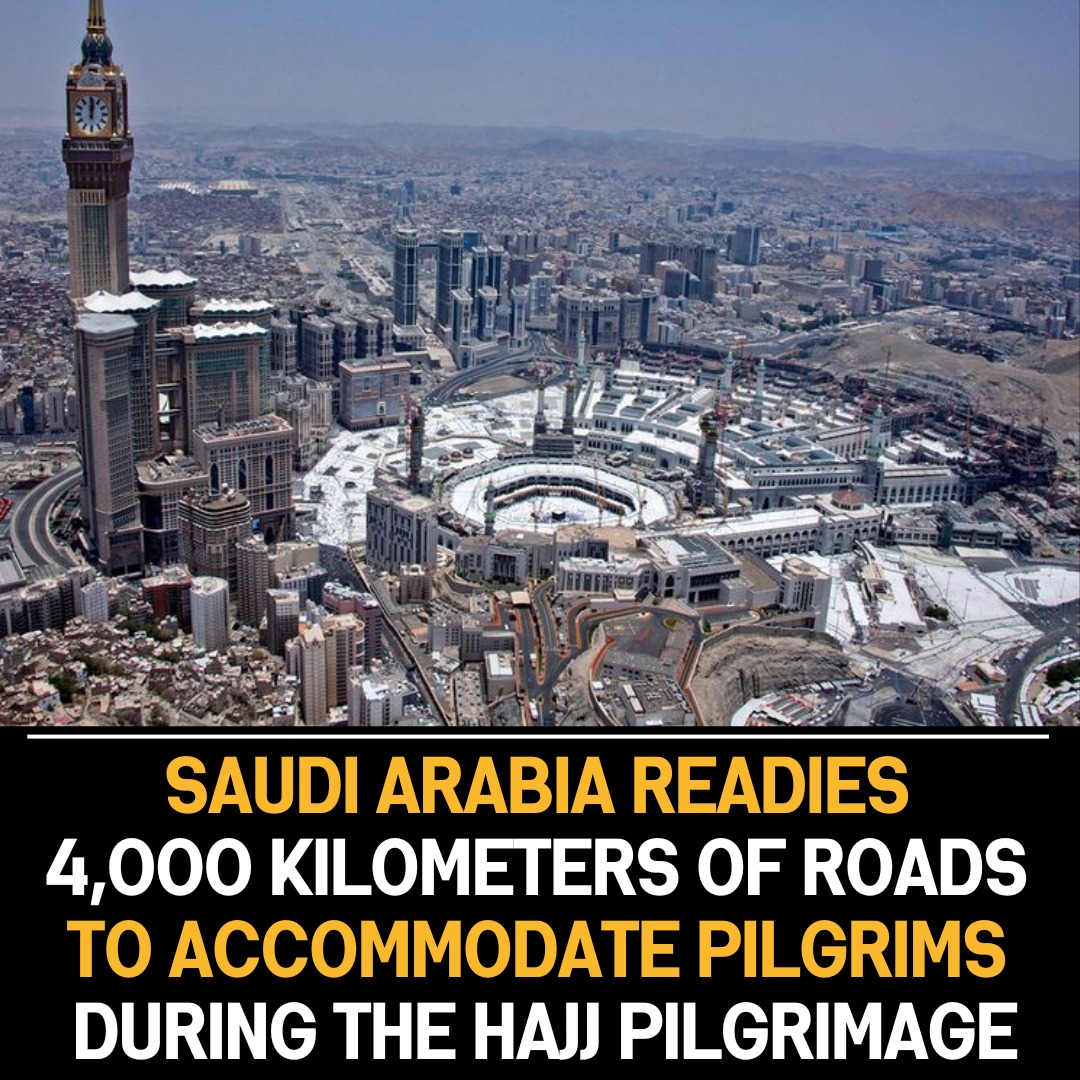As the annual Hajj pilgrimage approaches, Saudi Arabia is diligently preparing its infrastructure to ensure a seamless experience for the millions of pilgrims expected to converge on the holy sites. One critical aspect of this preparation involves readying a vast network of roads spanning approximately 4,000 kilometers. These efforts are aimed at facilitating smooth transportation and accommodating the significant influx of pilgrims traveling to perform their religious duties.
The Hajj pilgrimage is one of the largest religious gatherings in the world, drawing millions of Muslims from around the globe to the holy cities of Mecca and Medina in Saudi Arabia. Ensuring the safe and efficient movement of pilgrims during this monumental event is a top priority for the Saudi government, which invests significant resources in infrastructure development and maintenance to meet the needs of the pilgrims.
The preparation of 4,000 kilometers of roads plays a crucial role in facilitating the movement of pilgrims between various holy sites and accommodations throughout the pilgrimage journey. These roads connect key locations such as the Grand Mosque in Mecca, the Prophet’s Mosque in Medina, and the tent cities in Mina and Arafat, where pilgrims perform essential rites of the Hajj.
The road preparation efforts encompass a range of activities, including maintenance, expansion, and enhancement of existing roadways to accommodate the increased traffic volume during the pilgrimage period. Special attention is given to ensuring road safety, improving traffic flow, and minimizing congestion to enhance the overall pilgrimage experience for pilgrims.
In addition to road infrastructure, Saudi Arabia also leverages advanced technologies and logistical systems to manage transportation during the Hajj season efficiently. This includes the deployment of traffic management systems, electronic signage, and real-time monitoring to facilitate the movement of vehicles and pedestrians along designated routes.
Furthermore, the Saudi government collaborates with various stakeholders, including transportation authorities, local municipalities, and service providers, to coordinate efforts and optimize transportation services for pilgrims. This multi-faceted approach helps streamline logistics, reduce delays, and enhance the overall efficiency of transportation operations during the Hajj pilgrimage.
Overall, the preparation of 4,000 kilometers of roads underscores Saudi Arabia’s commitment to ensuring the safety, comfort, and convenience of pilgrims undertaking the sacred journey of Hajj. By investing in robust infrastructure and implementing effective transportation strategies, the Kingdom strives to uphold the spiritual significance of the pilgrimage while providing pilgrims with a memorable and meaningful experience.









